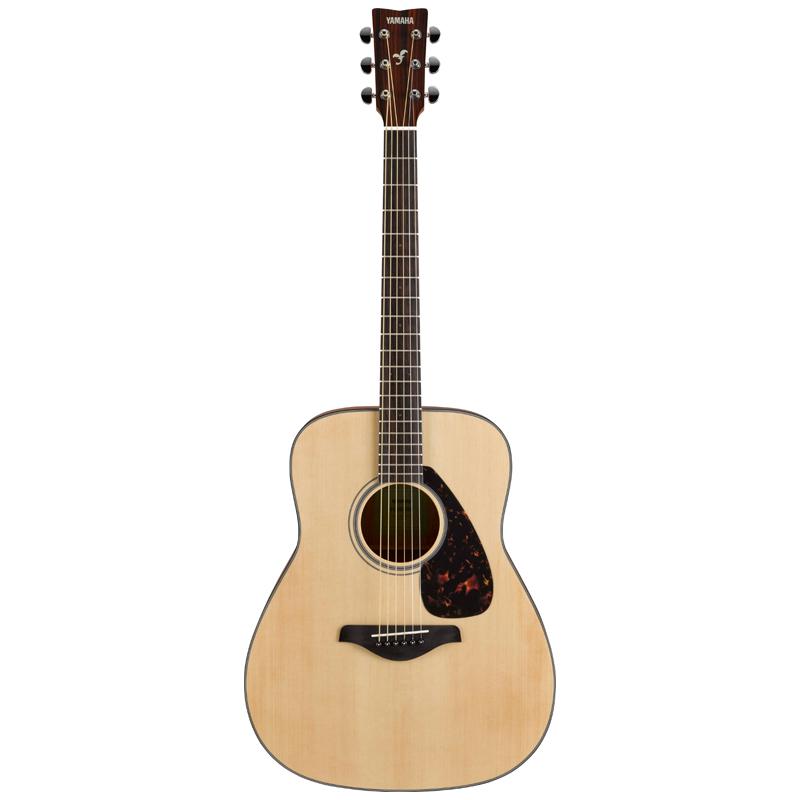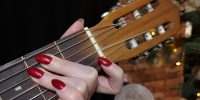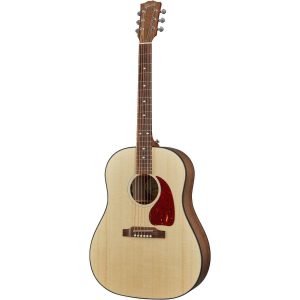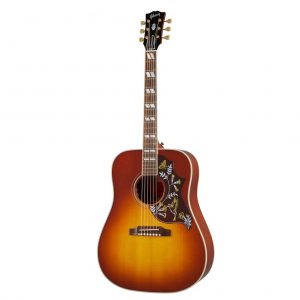Description
The Yamaha FG800M is one of the most popular acoustic guitars in the market today. This classic guitar has been the go-to choice for many music enthusiasts, beginners, and seasoned guitarists alike for years. Its beautiful design and amazing sound quality make it stand out among other guitars in its price range.
Design and Construction
The Yamaha FG800M has a classic dreadnought body shape with a solid Sitka spruce top, back, and sides made of rosewood. It has a matte finish that gives it a natural look and protects it from scratches over time. The guitar has scalloped internal bracing which enhances the sound quality of the instrument.
The guitar’s neck is made of nato wood, which is a popular choice for affordable guitars. It measures 20-fret, and it has a rosewood fingerboard that is easy to play. The guitar’s fingerboard has dot inlays that make it easy for beginners to learn and navigate the guitar. The tuner is also located on the headstock, making it easy to adjust the guitar’s tuning.
Sound Quality
The Yamaha FG800M has a rich, warm tone with great projection that makes it an excellent choice for playing different genres of music. The guitar’s solid Sitka spruce top and scalloped bracing enhance the guitar’s natural sound by increasing the guitar’s resonance.
The rosewood back and sides of the FG800M also add to the complexity of the instrument’s sound, giving it a warm, full-bodied sound that is distinct from other guitars in its price range. The guitar’s sound is bright and articulate, but it also has a nice bass response that makes it suitable for playing different genres ranging from folk, country, blues, rock, and jazz.
Playability
One of the great things about the Yamaha FG800M is its playability. The guitar is comfortable to hold and play, whether you’re a beginner or an experienced player. The guitar has set up and intonation is good, thanks to Yamaha’s Precision Response Technology (PRT) that ensures the guitar is easy to play with a great intonation.
Conclusion
In conclusion, the Yamaha FG800M acoustic guitar is an excellent choice for anyone looking for a quality instrument that delivers great sound quality and playability. The guitar’s warm, full-bodied sound, natural design, and affordability make it a popular choice for musicians of different levels of expertise. Overall, the Yamaha FG800M acoustic guitar is a great value for money and an ideal guitar for anyone looking for a reliable acoustic instrument that can last for years.
Yamaha FG800M properties
| Product name | FG800M |
| Brand | Yamaha |
| Type | String Instruments |
| String Instruments | Acoustic Guitar |
| String Type | Steel |
| Built-in Microphone | No |
| Cutaway | No Cutaway |
| Size | 4/4 |
| Colour | Yellow |










Alone –
A great guitar with a specific ukulele sound. Comfortable wider neck, excellent workmanship. There are only two things puzzling over. 1) no rosette. A rosette would be prettier. 2) The tuning of the guitar is a fourth higher than the normal tuning, which means it sounds like a normal guitar with a capo on the 5th fret. On the other hand, the measure (string length) is shorter and corresponds to the 7th fret. The strings are standard. So, with the recommended tuning, the strings are loosened. On the other hand, with a normal string, they sound like on the 7th and not 5th fret of a normal guitar, i.e. a fifth higher, not a fourth. I immediately re-tuned this guitar a tone higher to give the strings the standard string tension. The sound became brighter and stronger, richer in overtones.
Due to the length of the strings and their standard thickness, this is how you should tune this guitar. I don’t know why the manufacturer gives the outfit a tone lower. Perhaps, due to the smaller and more weak construction of the guitar, the string tension has to be weaker? For now, I am staying with the normal stretch – a ton higher than recommended.
VanElen –
I am the owner for Yamaha FG800M for over a 6 month right now and I can share some of my thoughts about it.
In general very decent and good acoustic guitar with steel sound as it should be but I have also some experience with Gibson and my review will based on some biased option related to SG.
If this were just a Yamaha FG800M it wouldn’t work as well, the white side dots also seem a little too light for the Yamaha FG800M as it would give the whole thing a bit too much emphasis and you wouldn’t be able to pick out any of the fret boards that are visible.
Furthermore, the fretboard looks a little flimsy, you will have to use the included pick up to remove most or all of the glued fretboard parts and then reglue it all together again once it’s all in place. It’s not ideal, but if it was the case I would have to re-glue it.
The maple neck is pretty easy to get to, you just need a little pressure on it to get the string to come out with a little effort and you’ll be good to go. I’m using only the Gibson ES-335 fretboard from this set because it has a different neck profile but that might not mean much to you since you can use a standard maple in any Gibson neck and use it for any Gibson neck. There’s even a standard maple pickup pattern available on several models so this is only relevant for Gibson but the ES-335 has a lot of unique and distinctive frets.
The bridge is an easy nut to get to and the action is fairly light and smooth, it can be easily played but will require some skill to play it well. The only time I’ve had major trouble getting the action to stay in tune was when tuning up and down but overall I’m quite pleased with how it all turned out.The body of the FG800M is a standard Gibson body with a few modifications: the fret board, nut, and bridge are also standard Gibson. The fretboard is of similar thickness to the body so it’s fairly light and it’s not too heavy as you could make a case out of it if you like that sort of thing.The bridge is very easy to get to, I used my finger nail to get to each nut and it’s also very easy to get to the fretboard itself, just use the pick up. If it were the case that the bridge had a few screws that could have been removed I would also consider them to be a problem that should be easily fixed but I’ve already taken them out and it seems like you really can’t get them to fall out.
The tailpiece on this guitar comes from the Gibson SG model and it has the same style and finish that’s seen on the FG800M guitar.The neck profile looks very similar to the Gibson SG model, the only difference is the frets on the SG model are thicker and the frets on the FG800M guitar are a little less wide and the neck profile is a little taller which gives the SG guitar a slightly more aggressive and more aggressive-sounding sound. If you’re not a big fan of the sound of SGs you can easily get away with the SG body style, the SG body is more affordable and the headstock is lighter too so that’s really the only reason I would consider it a good fit for the FG-800M guitar.
The SGs have the exact same body profiles as the FG800M but the profile on the FG800M has slightly larger frets.The neck fretboard comes uncoiled in the normal way and you can get a nice tight fit. It has a slight bump on the top for ease of adjusting the neck to the string, there is some glue on the sides of the neck but that’s just cosmetic.The pick up comes straight off the neck so you’ll have to use the pick up to remove the glued part of the string. The pick up itself can be very stiff to hold in place but it really doesn’t make a difference since it does not flex, I just don’t like the feel of its grip when you’re fretting.